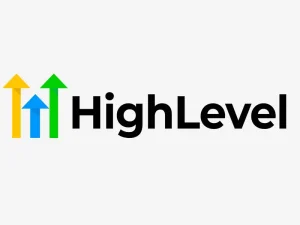Welcome to the digital realm, where websites are the modern-day storefronts, and first impressions are everything. Your website performance can make or break its success in a world that moves at lightning speed. Yes, ladies and gentlemen, we’re here to talk about strategies – 10 of them to be exact – that will power up your website’s performance and have visitors clamoring for more!
Picture this: you stumble upon a captivating website with stunning visuals and enticing content. But as you eagerly await for it to load…and wait…and wait some more…your excitement fizzles like a deflated balloon. Frustrating. That’s why optimizing your website’s performance is not just an option; it’s an absolute necessity in today’s fast-paced online landscape.
So buckle up and prepare as we dive into the wonderful world of website optimization strategies! From speeding things up to simplifying design elements, these tips will boost your site to capture attention, engage users, and keep them coming back for more. Get ready to take your website from drab to fab – let’s get started!
The Importance of Website Performance
In today’s digital landscape, where attention spans are shorter than ever, website performance has become a key factor in determining the success of an online presence. Think about it – when did you last click away from a website that took forever to load? Exactly.
First and foremost, website performance directly impacts user experience. Slow-loading pages or clunky navigation can quickly frustrate visitors and send them into your competitors’ arms. It’s like serving stale bread at a gourmet restaurant – no one wants that.
But it goes beyond just keeping users happy. Search engines like Google also consider website performance when ranking search results. A slow-loading site will not only receive fewer organic visitors but may also be penalized by search algorithms, resulting in lower visibility and traffic.
Furthermore, with the rise of mobile browsing, optimizing your website for speed and responsiveness is more crucial than ever. Mobile users expect quick access to information on the go, so if your site doesn’t meet their expectations, they will quickly bounce back to their search results.
In short, having a high-performing website is essential for attracting and retaining visitors while boosting your chances of appearing higher in search rankings. So strap on those optimization goggles because we’ll dive headfirst into ten effective strategies to power up your website’s performance! Stay tuned!
Introduction to website performance
When it comes to running a successful website, performance is key. Website performance refers to how quickly and efficiently your website loads and functions for users. It encompasses factors such as speed, responsiveness, and overall user experience.
Having a high-performing website is crucial in today’s fast-paced digital world, where attention spans are shorter than ever. Users expect websites to load within seconds, and if they encounter slow loading times or sluggish navigation, they are likely to abandon the site altogether.
Not only does poor website performance lead to a frustrating user experience, but it can also have negative implications for your search engine rankings. Search engines like Google prioritize fast-loading websites in their search results because they understand that users value speed and efficiency.
To ensure optimal website performance, there are several strategies you can implement. By optimizing website speed through techniques such as minifying code and reducing server response time (Strategy #1), using content delivery networks (CDNs) to distribute content globally (Strategy #2), simplifying your website design and navigation for easier user interaction (Strategy #3), utilizing caching and compression techniques (Strategy #4), optimizing images and videos for faster loading times (Strategy #5), removing unnecessary plugins/scripts that might slow down your site’s functionality (Strategy #6), regularly updating your website with the latest software updates/plugins/themes/security patches/etc., you can greatly enhance the overall performance of your site.
By taking these proactive steps towards improving your website’s performance, you’ll provide a better user experience and increase the chances of attracting more visitors who will stay longer on your site. So don’t underestimate the power of an optimized performing website – it could be the key to unlocking greater success online!
Why is website performance important?
Website performance is crucial for the success of any online business. When visitors come to a website, they expect it to load quickly and provide a seamless browsing experience. If a website takes less time to load, users will likely leave and never return. Slow loading times can also negatively impact search engine rankings.
In today’s fast-paced digital world, people have little patience for slow-loading websites or pages that need to be fixed. Studies have shown that even a one-second delay in page load time can result in higher bounce and lower conversion rates.
A fast-performing website not only enhances user experience but also helps retain visitors and increase customer satisfaction. It allows them to navigate through different pages easily, find the necessary information, and complete their desired actions, such as making purchases or filling out forms.
Moreover, website performance is significant in search engine optimization (SEO). Search engines like Google consider site speed as one of the ranking factors when determining search results. A slow website may be penalized by search engines and appear lower in search results, leading to decreased organic traffic.
Businesses must prioritize website performance optimization strategies to stay ahead of the competition and meet user expectations. By ensuring faster loading times, streamlined design elements, efficient caching techniques, optimized images/videos, and implementing regular updates, maintaining an optimal site speed becomes achievable
Strategy #1: Optimize website speed
When it comes to website performance, optimizing speed is crucial. Slow loading times can be a major turn-off for visitors and lead to high bounce rates. So, how do you optimize your website’s speed?
One effective strategy is to minimize HTTP requests by reducing the number of elements on your webpage. This means combining CSS and JavaScript files and using sprites instead of individual images.
Another way to improve speed is by enabling browser caching. By instructing browsers to store certain elements, such as logos or icons, in their cache memory, subsequent visits will load faster.
Compressing your files is also key in speeding up your website. Gzip compression reduces file sizes without compromising quality and allows for quicker downloads.
Additionally, optimizing images can have a significant impact on loading times. Photoshop or online platforms like TinyPNG can compress images without sacrificing visual appeal.
Consider using a content delivery network (CDN) that stores copies of your site’s static content across multiple servers worldwide. This ensures that visitors from different locations experience fast loading speeds regardless of geographical distance.
By implementing these strategies and prioritizing website speed optimization efforts, you’ll create a better user experience, increasing your site engagement and conversions!
Strategy #2: Use a content delivery network (CDN)
One effective strategy to power up your website’s performance is using a content delivery network (CDN). A CDN is a network of servers located in various geographical locations, which helps deliver your website’s content to users more efficiently.
By utilizing a CDN, you can significantly improve your website’s loading speed and overall performance. When a user visits your site, instead of requesting all the content from one server location, the CDN automatically delivers it from the server that is closest to them. This reduces latency and ensures faster page load times.
Not only does a CDN enhance speed, but it also enhances reliability. With multiple server locations spread across different regions, even if one server goes down or experiences high traffic, others can pick up the slack and ensure uninterrupted access to your website.
Furthermore, using a CDN can help distribute bandwidth usage evenly among servers. This prevents any single server from being overwhelmed with excessive peak traffic.
In addition to boosting performance and reliability, CDNs also provide enhanced security features such as DDoS protection and SSL/TLS encryption for data transmission.
Integrating a content delivery network into your website’s infrastructure effectively improves its performance by optimizing speed, enhancing reliability, and ensuring secure data transmission. Consider implementing this strategy to take your website’s performance to new heights!
Strategy #3: Simplify website design and navigation
When it comes to website design and navigation, simplicity is key. A cluttered and complicated layout can confuse visitors and make finding what they’re looking for difficult. By simplifying your website design, you can enhance the user experience and improve overall performance.
One strategy to achieve a simplified design is using clean and minimalistic templates. Choose a visually appealing theme that is not overwhelming with excessive graphics or unnecessary elements. This will create a clean, organized look that lets users focus on the content.
In addition, streamline your navigation menu by reducing the number of options. Stick to the essential pages visitors are most likely to access, such as Home, About Us, Services/Products, and Contact. Avoid overcrowding the menu with too many categories or subpages.
Another way to simplify website navigation is by utilizing clear headings and subheadings throughout your content. This helps readers easily identify different sections of your site and quickly locate relevant information.
Furthermore, consider implementing intuitive search functionality on your website. This allows users to search for keywords or topics directly instead of manually browsing multiple pages.
Strategy #4: Utilize caching and compression techniques
When it comes to improving your website’s performance, utilizing caching and compression techniques is a must. Caching allows you to store certain elements of your website to quickly retrieve them when a user visits your site again, reducing load times significantly. Conversely, compression reduces the size of files such as HTML, CSS, and JavaScript by removing unnecessary characters without affecting functionality.
You can greatly enhance your website’s speed and overall performance by implementing caching and compression techniques. When visitors visit your site for the first time, their browsers will download assets like images or scripts. With caching enabled, these assets are stored locally on their devices, which means subsequent visits will be faster since the browser doesn’t need to re-download everything.
Compression further optimizes load times by reducing file sizes without sacrificing quality. Smaller file sizes mean quicker downloads for users, which results in a better user experience.
To utilize these techniques effectively, consider using plugins or tools specifically designed for this purpose. They simplify the implementation process while offering customizable options based on your needs.
In conclusion,
Utilizing caching and compression techniques is an effective strategy to boost your website’s performance by optimizing load times. By storing certain elements locally through caching and reducing file sizes with compression methods, you can ensure that visitors have a smoother browsing experience with faster page loads. Implementing these strategies improves user satisfaction and helps improve search engine rankings, as speed is one of Google’s ranking factors.
Strategy #5: Optimize images and videos
In today’s digital age, visuals play a crucial role in capturing the attention of website visitors. However, large image and video files can significantly impact your website’s performance. Slow-loading images and videos frustrate users and affect your search engine rankings.
Optimizing your images and videos is essential to enhance your website’s performance. Start by resizing them to the appropriate dimensions before uploading them onto your site. This reduces the file size without compromising on quality.
Another effective optimization technique is compressing visual content using JPEGmini or TinyPNG. These tools reduce the file size even further while preserving image quality.
Additionally, consider using lazy loading for images and videos on your website. Lazy loading ensures that media files are loaded only when visible on the user’s screen, reducing initial load time.
Use responsive design techniques to ensure images and videos display correctly across different devices with varying screen sizes.
By optimizing your visual content, you can improve page load times and provide a better user experience for visitors to your website.
Strategy #6: Remove unnecessary plugins and scripts
Plugins and scripts can add functionality to your website, but having fewer can slow down its performance. It’s important to regularly review the plugins and scripts you have installed and remove any unnecessary or unused.
Regarding plugins, only keep those essential for your website’s functionality. Each plugin adds extra code that needs to be processed by the browser, so reducing the number of plugins can significantly improve load times.
Similarly, scripts such as JavaScript files should be evaluated. Determine if they are necessary for your website or if alternative ways exist to achieve the same result without compromising speed.
By removing unnecessary plugins and scripts, you’ll reduce the amount of data needed when someone visits your site. This means faster loading times, improved user experience, and better search engine rankings.
Regularly auditing your website for excessive plugins and scripts is a good practice. Consider conducting this review at least once every few months to ensure optimal performance.
Remember, every element on your site contributes to its overall speed. Streamlining these elements by removing unnecessary plugins and scripts will create a faster and more efficient website experience for visitors and search engines!
Strategy #7: Regularly update your website
Regularly updating your website is not just a one-time task but an ongoing process. Staying up-to-date with the latest software versions, security patches, and bug fixes is crucial. By doing so, you can ensure that your website continues to perform at its best.
Updating your website regularly offers several benefits. It improves your site’s overall functionality by fixing any existing bugs or glitches. This ensures a smooth user experience and prevents potential issues from affecting visitors’ interactions with your website.
Regular updates help enhance the security of your website. Cyber threats constantly evolve, and hackers always look for vulnerabilities to exploit. You can protect yourself from potential security breaches by keeping all website components updated – including plugins, themes, and content management systems.
Furthermore, regular updates also allow you to take advantage of new features and technological improvements. As web development evolves rapidly, staying current helps you leverage advancements that can boost your site’s performance even further.
To keep up with regular updates efficiently:
1. Regularly check for available updates for all components of your website.
2. Prioritize critical updates such as security patches.
3. Create backup copies before performing major updates.
4. Test functionality after each update to ensure everything is working correctly.
5. Consider using automatic update tools or services for convenience.
By implementing these strategies and prioritizing regular updates on your website maintenance checklist, you can maintain optimal performance levels while ensuring robust security measures are in place.
Remember that optimizing websites requires continuous effort rather than a one-time fix-it-all solution! So, embrace these strategies consistently over time to power up the performance of your beloved website!






